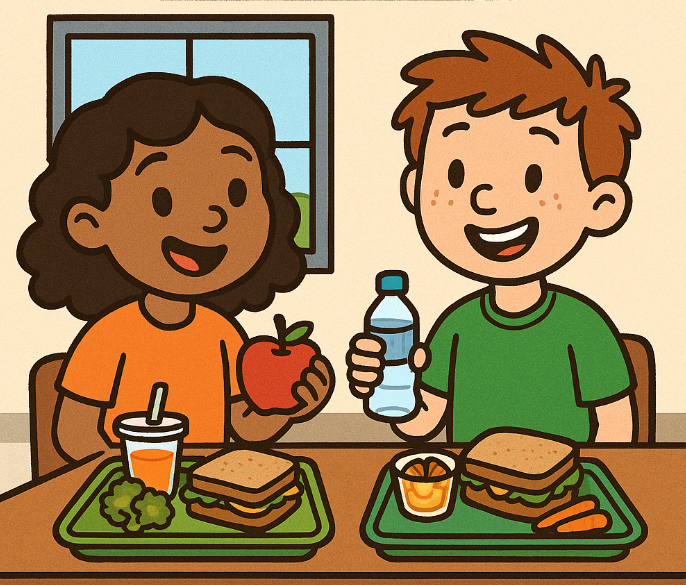
Can School Gardens Survive Without Support?
A few years ago, school gardens were everywhere. From raised beds outside elementary schools to rooftop plots in city high schools, the movement to grow fruits and vegetables with kids looked unstoppable. Teachers used gardens to teach science, math, and mindfulness. Parents snapped photos of kids proudly holding up their first tomato. Cafeterias served salad greens grown right outside their doors.
But now, something’s changed. The plants are gone. The soil has hardened. And in too many places, the once-thriving garden is just an empty patch of dirt behind the playground.
What happened?
The Promise: Growing Healthy Habits
When the Healthy Hunger-Free Kids Act (HHFKA) passed in 2010, it did more than just set new standards for school lunches—it planted a vision. Literally.
The policy encouraged schools to launch gardens as a way to boost fruit and vegetable consumption. It made sense: when kids grow food, they’re far more likely to eat it. Studies show that children exposed to school gardens not only recognize and prefer more fruits and vegetables but also actually eat more of them. One study found that adding garden-grown veggies to a high school salad bar boosted selection by 10%. Another found that kids who gardened were more adventurous eaters overall.
It wasn’t just about nutrition. Teachers used gardens to teach patience, teamwork, and care. Students who struggled in the classroom often thrived outside, taking ownership of something real and alive. For children facing stress or trauma, these small green spaces became sanctuaries of calm and connection.
For a while, it seemed like the garden movement could be a quiet revolution in children’s health and mental well-being.
The Reality: A Growth Spurt That Fizzled
A new study from the New Jersey Child Health Study tells a different story. Researchers tracked 148 schools across Camden, Newark, New Brunswick, and Trenton from 2010 to 2018. In the first few years after the HHFKA passed, the number of schools with gardens jumped—from 19% in 2010 to 32% in 2013.
Then… the momentum stalled.
By 2017, the rate had dropped again. The surge in school gardens after the policy’s rollout wasn’t sustained. Even more concerning, schools with mostly Hispanic students were half as likely to have gardens as schools with mostly Black students.
In other words, even as the idea of “healthy schools” spread, access to these enriching programs wasn’t equal.

Why the Gardens Withered
So what caused the decline? The study and other research point to three main reasons:
1. Money Doesn’t Grow on Trees
The federal government allocated just $5 million nationally for the Farm to School program. That’s barely enough to plant a few seeds, let alone sustain a movement. In 2013, only 71 garden projects received funding across the entire country.
Schools that didn’t get grants often tried to maintain gardens with bake sales, volunteer help, or teachers’ own money. But that kind of grassroots energy is hard to sustain year after year—especially in underfunded districts.
2. No One’s Job to Keep It Alive
Many gardens relied on a single passionate teacher, parent, or principal. When those champions moved on, the garden often faded away. Schools already ask staff to do more with less, and maintaining a garden—watering, weeding, planning lessons, coordinating with food services—takes time few educators have to spare.
3. Seasons and Systems Don’t Always Align
In states like New Jersey, the growing season barely overlaps with the school year. Unless a community group keeps the garden going through the summer, all that hard work can wilt before the first day of school in September.
Add to that the bureaucratic hurdles of getting approval, navigating safety policies, or figuring out who owns the land—and you have a recipe for burnout.
Why It Still Matters: Beyond Nutrition
Let’s pause and remember why these gardens matter.
For kids, they’re not just about food—they’re about belonging, discovery, and resilience.
Tending a garden teaches responsibility and care for the environment. It encourages curiosity and problem-solving: Why are the leaves turning yellow? How can we get more sunlight? These small questions build scientific thinking and emotional regulation.
For students from low-income or urban neighborhoods, gardens can be a rare source of hands-on, sensory learning. For children facing anxiety or trauma, the quiet rhythm of planting and nurturing something living can be deeply healing.
And when kids bring home the kale or carrots they’ve grown, they share that pride—and those habits—with their families.
Yet, as the study shows, the schools that could benefit most from these experiences often have the least access to them.
What We Can Do Now
If we want school gardens to flourish again, we need more than good intentions. Here’s where parents, educators, and policymakers can start:
- Advocate for sustained funding. Push for your district or state to include garden programs in their budgets—not as “extras,” but as core to education and health.
- Build community partnerships. Local farms, master gardeners, and nonprofits can help maintain gardens year-round. Some schools even create student “garden clubs” that keep projects alive through transitions.
- Connect gardens to curriculum. When gardens tie into science, math, art, and health classes, they stop being side projects and become living classrooms.
- Share success stories. Schools that sustain gardens often do so because someone saw what they made possible. A single photo of kids harvesting lettuce can spark a whole new movement.
Growing Minds, Not Just Vegetables
If there’s one thing the research makes clear, it’s this: school gardens can change lives. They teach kids to care for living things, eat better, and see themselves as capable of shaping their world. But like any living thing, gardens need care, attention, and investment.
The Healthy Hunger-Free Kids Act planted the seed. Now, it’s up to communities to help it grow again.
🌱 Let’s Talk About It
What’s the biggest mental health or wellness challenge you see in schools today?
How can school gardens—or other hands-on programs—help kids reconnect with nature, nutrition, and each other?
What would it take to bring a garden back to your local school?



